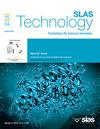Expression of PTEN, Akt and CREB genes in trigeminal ganglia of intractable migraine
IF 3.7
4区 医学
Q3 BIOCHEMICAL RESEARCH METHODS
引用次数: 0
Abstract
Migraine is a kind of common clinical headache. Because its etiology is unknown and the curative effect is not very ideal, recent studies have shown that the activation of trigeminal ganglion has a certain impact on the occurrence of migraine. In this paper, the rat migraine model was established by subcutaneous injection of nitroglycerin. Reverse transcription polymerase chain reaction (RT-PCR) and immunohistochemical techniques were used to observe the changes and correlation of the phosphatase and tensin homolog deleted on chromosome ten (PTEN), protein kinase B (Akt) and cAMP response element binding protein (CREB) expressions in trigeminal ganglia of migraine rats at gene and protein levels, respectively, in order to explore the relationship and role of these three genes in the pathogenesis of migraine. It can be seen from the experimental results that after the treatment of nickel carbohydrazide perchlorate (GTN), the expression level of PTEN mRNA in trigeminal ganglion decreased significantly, and it was the lowest at 12 h of GTN, with a value of 0.21. However, over time, PTEN mRNA expression level has rose to 0.44 after GTN24h, reaching the initial level. According to the calculation, PTEN was significantly negatively correlated with Akt protein expression, and its P value was <0.05. The experiment in this paper first proved that the attack rate of migraine in women was higher than that in men, and then proved the relationship between PTEN, Akt and CREB genes in the trigeminal ganglion of migraine.
难治性偏头痛三叉神经节中PTEN、Akt和CREB基因的表达
偏头痛是临床上常见的一种头痛。由于其病因不明,疗效也不是很理想,最近的研究表明,三叉神经节的激活对偏头痛的发生有一定的影响。本文采用硝酸甘油皮下注射法建立大鼠偏头痛模型。采用反转录聚合酶链反应(RT-PCR)和免疫组织化学技术分别在基因和蛋白水平上观察偏头痛大鼠三叉神经节中10号染色体上缺失的磷酸酶和紧张素同源物(PTEN)、蛋白激酶B (Akt)和cAMP反应元件结合蛋白(CREB)表达的变化及相关性,探讨这三个基因在偏头痛发病中的关系和作用。从实验结果可以看出,经高氯酸碳酰脲镍(GTN)处理后,三叉神经节中PTEN mRNA的表达水平显著降低,在GTN处理12h时表达水平最低,为0.21。但随着时间的推移,PTEN mRNA的表达水平在GTN24h后上升至0.44,达到初始水平。经计算,PTEN与Akt蛋白表达呈显著负相关,P值均小于0.05。本文的实验首先证明了女性偏头痛的发病率高于男性,然后证明了偏头痛三叉神经节中PTEN、Akt和CREB基因之间的关系。
本文章由计算机程序翻译,如有差异,请以英文原文为准。
求助全文
约1分钟内获得全文
求助全文
来源期刊

SLAS Technology
Computer Science-Computer Science Applications
CiteScore
6.30
自引率
7.40%
发文量
47
审稿时长
106 days
期刊介绍:
SLAS Technology emphasizes scientific and technical advances that enable and improve life sciences research and development; drug-delivery; diagnostics; biomedical and molecular imaging; and personalized and precision medicine. This includes high-throughput and other laboratory automation technologies; micro/nanotechnologies; analytical, separation and quantitative techniques; synthetic chemistry and biology; informatics (data analysis, statistics, bio, genomic and chemoinformatics); and more.
 求助内容:
求助内容: 应助结果提醒方式:
应助结果提醒方式:


